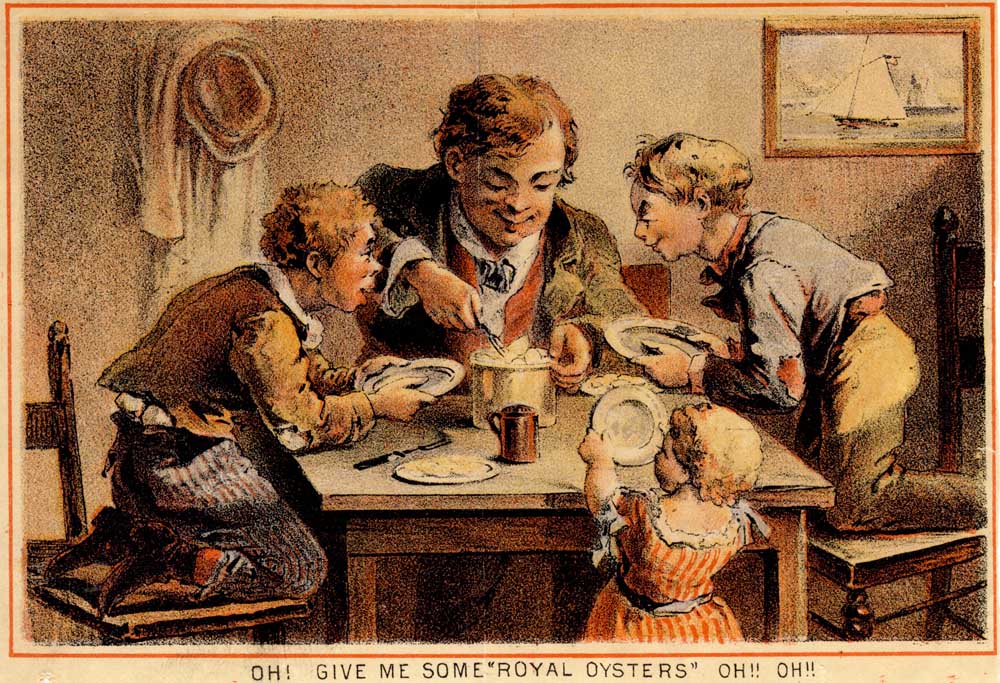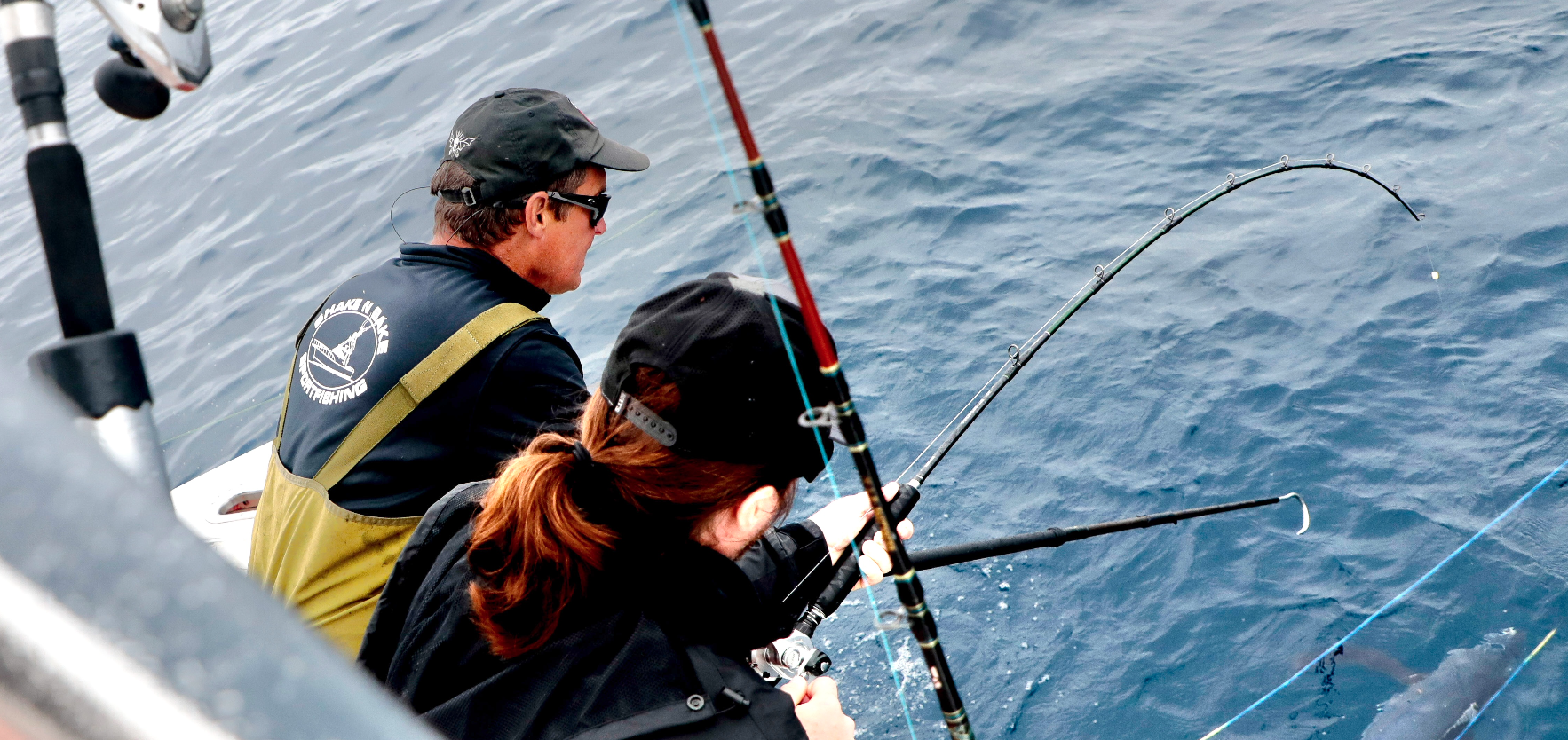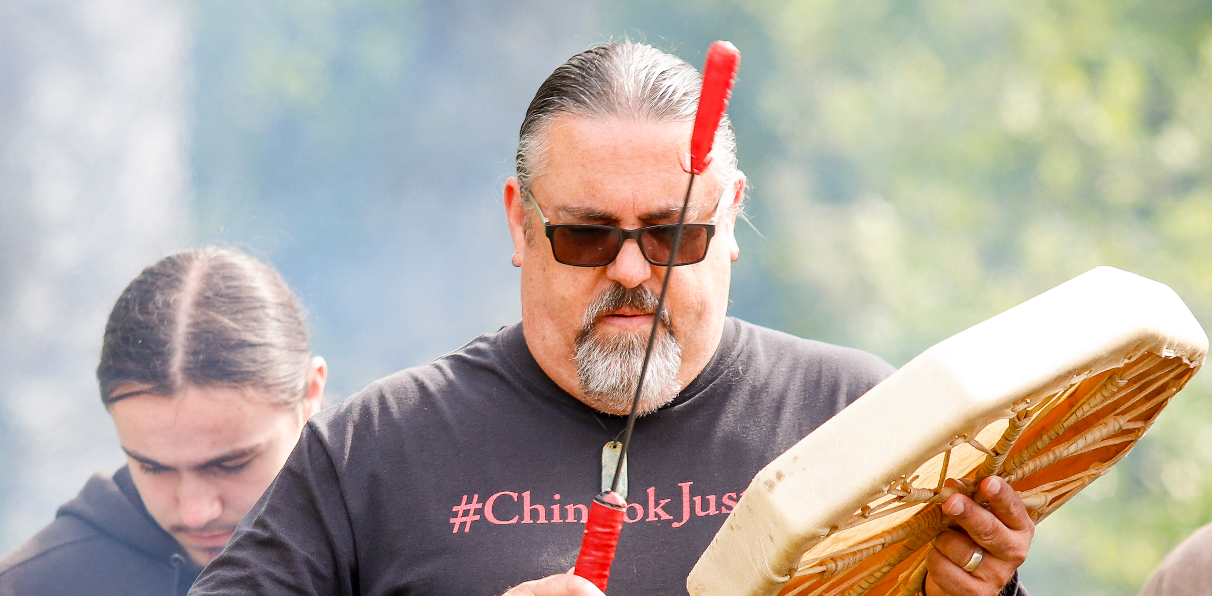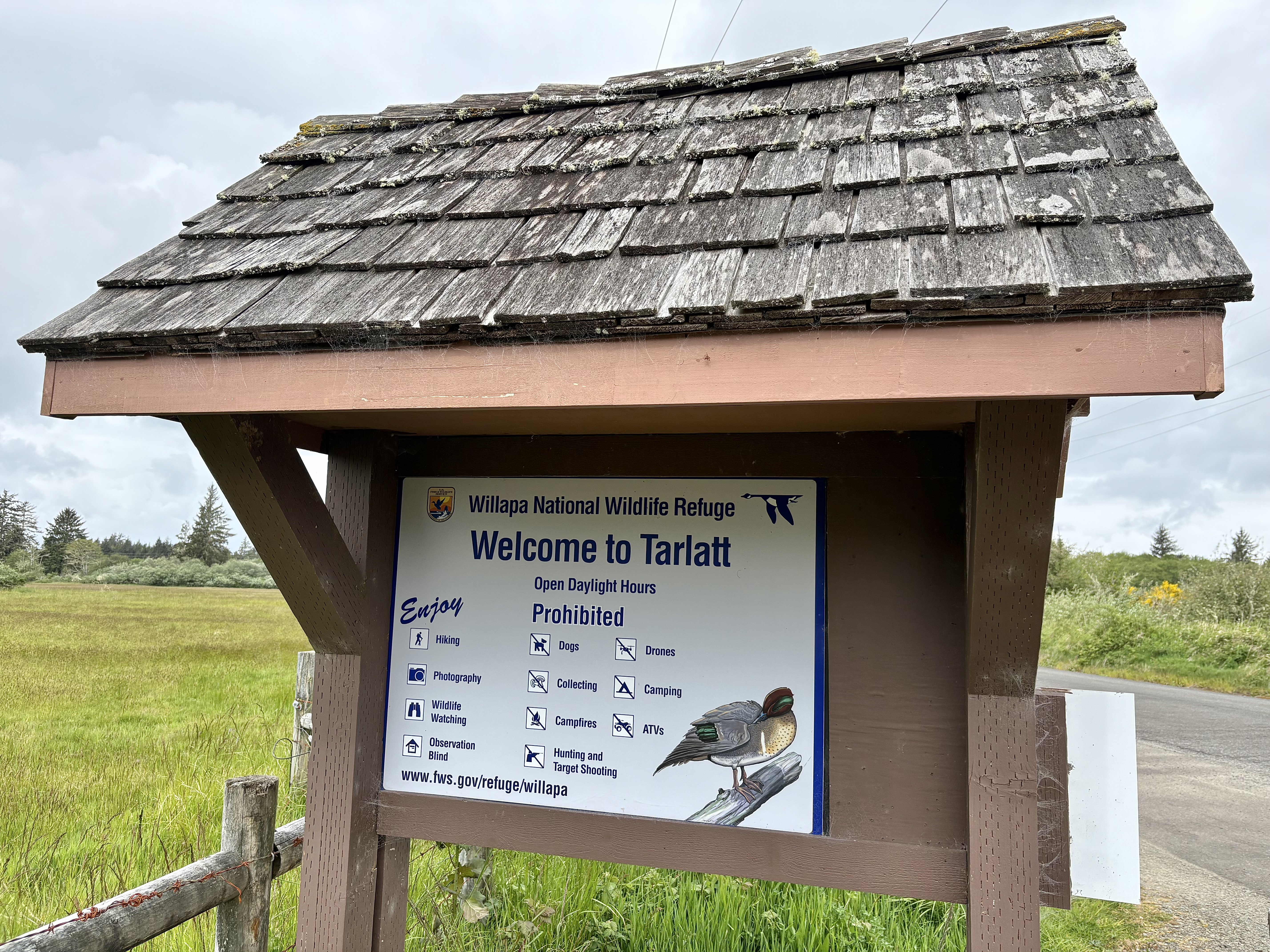Shoalwater tragedy: Reckless exploitation knifed native oysters
Published 10:57 am Monday, December 6, 2021

- A 19th century trade card demonstrates the enthusiasm surrounding oysters.
Oystering has remained a vital part of the Shoalwater/ Willapa Bay economy since Charles Russell’s first shipment to San Francisco in 1851.
Trending
Today’s growers depend upon an immigrant species from Japan, Ostrea gigas, now popularly known as the Pacific oyster.
Virtually gone are the small native Ostrea lurida, and with them, the Atlantic and Gulf coast eastern variety, Ostrea virginica, which failed to consistently propagate in great enough numbers in the waters of the Pacific Coast. (“Gone” in this case means they don’t exist in large enough numbers to support industrial-scale harvesting.)
In Washington state, native oysters are usually referred to as Olympias (or Olys) or occasionally as Shoalies.
Trending
San Francisco Bay
With a mass of ravenous gold seekers pouring into pioneer San Francisco, many of the newcomers came from the Atlantic Coast states, bringing with them a yearning for familiar tastes. Oysters grew in enormous quantities in Chesapeake Bay, Long Island Sound and other East and Gulf coast estuaries. They provided inexpensive, delicious and convenient meals for people of all income levels throughout the 19th century.
Having tired of canned meats, customers of early Gold Rush-era cafes relished a dinner of fresh oysters. A limited amount of native oysters came from nearby Tomales Bay, but the ones that most satisfied pioneer San Franciscans were from Shoalwater Bay, which were slightly larger with a more appealing taste. Once the “Shoalwaters” were brought to San Francisco, they were transplanted into bay waters to fatten and await a final harvesting. Some oysters were also brought from Puget Sound, or even Mexico, but the longer trips, without ice, could not be made with sufficient success or profit.
The principal locations for transplanting in San Francisco Bay waters were along the Marin County shore, near Sausalito and Point San Quentin, and on the east bay shore, near Oakland and Alameda. Other beds were located further north, at Point Isabel, Sheep Island, and in San Pablo Bay, at Pinole Point.
In the 20-year period to the 1870s, growing human populations near the Sacramento and San Joaquin rivers contributed to increased silting in San Francisco Bay, killing much of the oyster stock. Mining in the Sierra foothills added to the problem. Although the southern part of the bay offered a more protective environment, the additional cost of preparing the beds (along with the greater distance to market), made the losses in the north bay acceptable. Later, when the value of the eastern oysters influenced the growers otherwise, the south bay areas became the chosen place for oyster grounds.
During this period, most of the Shoalwater Bay oysters were marketed in San Francisco, although some were shipped to other northern California points, including Sacramento and the Mother Lode country of the Sierra foothills.
Placerville, a northern (Mother Lode) California gold-mining camptown, was also known as Hangtown. It was here that the now famous “Hangtown Fry” (oysters, bacon and eggs) purportedly became a favorite dish of the miners.
Shoalwater Bay: Native oysters and the early companies
Ancient middens reveal that the Ostrea lurida was an integral part of the Native American diet. The species also grew in different physical environments along the Pacific coast, from Alaska to Mexico. At Shoalwater Bay there are vast tidal areas that are uncovered at low tide. Most of the native oysters would be found in sink holes, which retain water, even at low tide. At Yaquina Bay, on the central Oregon coast, the natural beds were covered by water in nearly all tides. (The local pronunication of Yaquina Bay: Yuh-quinn-a.)
The hard-to-locate shell middens led some early white settlers to mistakenly doubt that Indians used oysters as a food staple. One report stated, “We saw no signs, not even a fragment of a shell about the lodges or along the beach.” Understanding the plentiful supply of food, some researchers speculate that various coastal tribes may not have depended upon the oyster year-round, but rather as a winter-month staple.
When Euro-Americans arrived at the Columbia River in great numbers, Chinook traders bartered with dried and fresh shellfish. Beginning in 1849 and 1850, fresh oysters were offered to the crews of schooners sailing between the Columbia and San Francisco. The first schooner to take oysters to California was the Sea Serpent. Other than the activities of Charles Russell, the other earliest known importer of Shoalwater Bay oysters was Anthony Ludlum, the pioneer San Francisco shipper, for whom the Sea Serpent’s Capt. Fieldsted had worked.
The initial efforts of the “Bruce boys” based in Bruceport on the east side of Willapa Bay (including John Morgan, Alexander Hanson, Mark and Sam Winant) were more of a cooperative venture, with the various individuals working together when shipping their oysters to San Francisco. The men fought to control the oyster land for themselves, but with the establishment of Oysterville in 1854, the new Espy and Company emerged. Soon after, Doane and Company also began shipping oysters to California.
In 1860 the Crellin family departed Bruceport for Oysterville, where brothers Thomas and John formed Crellin and Company, a more than formidable rival for the Bruceport establishment. Several changes were triggered by this move. John Morgan subsequently left Bruceport and married the Crellin brothers’ sister, Sophia. The Bruceport-Oysterville rivalry was permanently put to rest when Morgan and the Crellins formed a partnership, known at San Francisco as Morgan and Company and at Shoalwater Bay as Crellin and Company.
Several vessels are known to have hauled oyster cargo from 1851, including the Mary Taylor, Sarah Louise, Louisa Morrison, Carolita, Three Sisters, Mary Zephyr, Orient, John McCullough, Melanchthon, Enterprise, Concordia, Loo Choo (Capt. Nelson), Rialto, Columbia, and Tarleton. Vessels would haul both lumber and oysters, as well as supplies for Shoalwater/Willapa Bay.
When the disastrous winter freeze of 1861 killed Shoalwater Bay’s oysters, Mark and Sam Winant left Bruceport for Yaquina Bay, where they joined their brother, J.J. Winant. In 1862, as the oysters recovered from the previous winter, Issac Doane, who also maintained a separate company, joined Morgan and the Crellins. Later in the decade, in 1867, Doane platted the northern end of Long Island. Within three years, 15 lots were purchased by oystermen who built cabins and boathouses. The settlement, named Diamond City, was named by Long Beach residents viewing the sun’s reflections on Long Island windows and piles of oyster shell.
Morgan’s oyster business drew several pioneers of note to the bay. In 1864 Meinert Wachsmuth arrived on the Sarah Louise, captained by J.J. Winant. During those days visiting schooners would travel up the bay and Willapa River to Woodard’s Landing, known later as Willapa City (or Old Willapa). A decade later, another Morgan employee, Heinrich Wiegardt, first arrived at Shoalwater Bay aboard the schooner Louisa Morrison.
Another significant operation on the bay was the San Francisco oyster company owned by M. B. Moraghan. Moraghan’s company had become an important part of the California trade in 1868, only a short time before the era of the eastern oysters had begun. Moraghan became a major player in the Shoalwater Bay oyster business. A local joint stock company, Shoalwater Bay Oyster Company, was formed in 1869, made up of seven Bruceport and two Oysterville oystermen. During its first year the company employed 28 workers, including four women.
During 1870 and 1871 there were at least five significant oyster companies at Shoalwater Bay: Morgan-Crellin and Company, Shoalwater Bay Oyster Company, Espy and Company, Doane and Company (marketed their first oysters in 1871), and Washington Oyster Company (established in 1871 by I.A. Clark). Other operations on Shoalwater Bay included Issac Smith; William Clark; Leonard Rhoades; H.S. Gile; George Wilson and W.R. (Dick) Marion; and a San Francisco-based company, Swanberg and West.
Several years later, in 1886 and early 1887, Morgan and Company reorganized, taking in Swanberg and West and the R.H. Espy Oyster Company, which had been made up of Espy, H.S. Gile, and Will and Issac Doane. (Gile and Issac Doane were married to sisters of Morgan.) At this time Doane became Morgan’s field representative on Shoalwater Bay.
The Rivals: The Winants and Yaquina Bay
Beginning in 1862 two companies competed for the San Francisco oyster business at Yaquina Bay: Winant and Company and Ludlum and Company.
With the disaster of the 1861 freeze at Shoalwater Bay, Sam and Mark Winant cut their ties with John Morgan to join brother J.J. Winant. Winant brought the first steam-powered vessel into Yaquina Bay, bringing with him Capt. Solomon Dodge. One of the first steps taken by Dodge and Winant was to form a partnership with Joseph Lewis.
Lewis was a government employee of the Siletz Indian Reservation, and had been the first white to discover the oysters of Yaquina Bay. With his wife Lucy, a Tututni Indian from the lower Rogue River, Lewis spent the remainder of his life in the oyster business. Consequently, oystering became the first cash business on Yaquina Bay.
Ludlum and Company also had a Shoalwater Bay connection: its manager, Richard Hillyer, was another of the original Bruce boys. Not only were the oystermen of Yaquina Bay former Shoalwater Bay residents, but another Oysterville was established on the side of a steep bluff on the south shore of the Oregon bay. Founded by Capt. Dodge, Yaquina Bay’s Oysterville did not resemble its Shoalwater Bay namesake, and the settlement never achieved any sizable population. (Newport became the major city on Yaquina Bay.)
When Richard Hillyer first arrived aboard the schooner Cornelia Terry, local Indian agent Ben Simpson, representing the state government and the Siletz tribe, insisted that Hillyer honor the government’s promise to the Siletz people. It had been agreed that profits from the harvesting of Indian oyster lands would be shared between the oystermen and the tribe. (The cost to the oyster companies was to be 15 cents from each bushel of oysters taken from the bay.) The Winants complied, but Hillyer refused, claiming that American citizens had a free right to take fish or shellfish in all U.S. waters.
Corporal Royal Bensell, later the first mayor of Newport, protested that Hillyer and his men had threatened to use “knockout drops” to harm his soldiers. No physical violence took place, and Hillyer was granted a court injunction, allowing him to harvest oysters free of any hinderance until November 1864. After that, the federal court ruled that the government could establish a reservation and oversee how the land would be used.
In 1868 Yaquina Bay oystermen adopted rules to regulate their business. The Oregon Legislature followed this by passing into state law guidelines meant to protect the future of oystering: Oystermen had to reside 12 months in the state and six months in the county before they would could tong oysters, and, each operator could obtain no more than two acres of tide land for private oyster beds. Under these regulations, Ludlum and Company stayed at Yaquina Bay for only a short time, while the Winants shipped oysters to San Francisco a few more years.
Lonely voice raises concern
In 1874, Winant, in response to the dwindling number of native oysters at both Yaquina Bay and Shoalwater Bay, voiced his concerns by writing and distributing a pamphlet addressing the problem: “Oyster Business of the Pacific Coast: Its Present Condition and Future Prospects.” Winant stated that Shoalwater Bay had continued to furnish San Francisco with all the oysters the city required, but that the Pacific Northwest bay had not shared in the prosperity of the California city. Winant went on to point out that a few wealthy oystermen had diverted the wealth from the natural resources of the bay without putting anything back into the local Shoalwater Bay economy.
Winant’s ideas were before their time, but instead of adopting his farseeing solutions, the oystermen went on their merry way of backstabbing and competing for the last dollar to be made in the native oyster business. In the early 1880s unrealistic and misleading reports were given about the conditions of the native oyster industry, claiming that the oyster beds were as good as any time since 1850.
Decline: Too little, too late
In September 1883, Oysterville’s Pacific Journal reported that local oystermen shipped between 100 to 300 sacks (100 pounds each) of oysters from Bay Center each week. With oysters reserved for winter shipping near the mouth of the Palix River, Bay Center had become the key area for the bay’s oyster industry. It was acknowledged that the best oyster land was nearby, and that Bay Center had one of the best harbors in the bay.
Although eastern oysters had captured most of the West Coast market by 1895, many customers still preferred the Shoalwater natives. In 1895 local oystermen produced and shipped natives valued at more than $66,000 to San Francisco. At Yaquina Bay, an 1896 report claimed that the Ostrea lurida species had essentially disappeared, the final blow identified as too much culling of the native beds. Dick Marion stated in 1897 that the demand for native oysters exceeded the supply, and that he could ship 30,000 sacks for the year if the oysters could be had. Marion shipped out 200 sacks of oysters every five days for San Francisco, and George W. Brown another 25 sacks. The price was 80 cents a basket, sacks furnished.
People who claimed to know the oyster business continued to guarantee that it was as healthy and as good as it had ever been. The claims were always buoyed by the hope that the next season would bring the bring back a big spawn and the “good old days.” Between 1890 to 1920 more than 1.25 million baskets of native oysters were shipped to San Francisco. In 1891, the number was 131,508 baskets, the last productive year for the harvest of the native oysters. From 1895 to 1899 an average of 90,000 bushels were shipped out each year. After 1900 the business continued to decline.
• 1900 to 1904: an average of 70,000 bushels shipped per year
• 1905 to 1910: an average of 45,000 bushels shipped per year.
• In 1911: shipments plummeted to 30,000 bushels for the year.
• 1912 to 1913: an average of 13,000 bushels shipped each year.
• 1914 to 1920: less than 3,000 bushels shipped per year.
Price cutting had become the norm for the oyster business. Some oystermen undercut their competitors by selling their oysters as low as $1.25 per sack. Unfortunately, this practice did not allow for a decent wage for employees. As the price war commenced, the stripping of the natural beds and spawning grounds accelerated. Inferior oysters were sold, further damaging the good name of Shoalwater Bay oysters. The fear (a legitimate one) was that this action aided in the near extermination of the native oysters. It had taken 20 years to recognize the failure of the natives thatWinant had warned about in his 1874 treatise for an industry-wide cooperative.
The pressure of cultivating transplanted eastern oysters brought on new laws in 1897 in an attempt to protect Washington state’s natural oyster beds. The new law created the County Board of Oyster Land Commissioners, consisting of three residents of the county they served, and who were currently (or who had been) oystermen for at least five years. The commissioners were appointed by the state governor to three year terms, and were empowered to determine which oyster lands were natural beds and therefore would be made a part of permanently state-owned oyster land. The commissioners also determined which oyster lands were available for sale to citizens. According to State Rep. L.L. Bush of Bay Center, the new law would hopefully prevent excessive seed oyster removal from the natural beds, helping to preserve the native oyster industry.
As much as the local oystermen fought to save the native oyster stock, the battle had been lost years before when ambition and greed for profits had led to harvesting everything without worry of maintaining a good seed stock of oysters. In Oregon, Carl Shoemaker, in his 1918 report to the state, simply stated the case: “The natural restocking of the oyster beds of Oregon has fallen off to such an extent that the industry can hardly said to be profitable.”
In 1930, a University of Washington study was undertaken to attempt to bring back the native oyster stock. As a part of his university studies, peninsula oysterman Ted Holway performed experiments on native oyster propagation. Holway was a local lad, a graduate assistant in the university’s School of Fisheries, and was working with the university’s well known Professor Trevor Kincaid.
Holway and Kincaid’s field experiments took place at a station along the Naselle River, just above the location of the old ocean highway bridge. Although several sets of oyster larvae survived up to a point, the high alkalinity content of the researchers’ concrete pond proved to be a problem that was not solved. After that, no significant efforts were made to resurrect the species on Willapa Bay.
End of an era
Years of harvesting without the worry of conservation greatly depleted the native stock. Then, when the eastern oyster was introduced to San Francisco, the price paid for the natives spiraled downward. Before the easterns were introduced, the natives commanded a price of $16 per sack for 1,000 oysters. By the mid-1870s the price plunged to $4 and by the 1880s the price of native oysters had gone down to $2.50, sometimes lower during the price wars.
Once the stock was depleted, any significant recovery of the species was doomed. Environmental changes, along with logging practices, increased sediment deposits in the bay that exacerbated the Ostrea lurida’s survival possibilities. To seal the native oysters’ fate, the arrival of the immigrant species — the eastern and later, the Japanese Pacific oyster — took much of the available nutrients from the water.
Whatever other possibility of survival that existed was damaged by the occasional diseases that have always effected shellfish. Talk of disease as being the primary reason for the demise of the native and eastern oysters has been greatly exaggerated and inaccurate. Still, a few of the Ostrea lurida have remained, but seldom in numbers great enough for local use or much commercial business.
Historically, the native Ostrea lurida species was found in various locations along North America’s Pacific coast, from Sitka, Alaska to Cabo San Lucas or Mazatlan, Mexico. The largest numbers, though, were located in the Pacific Northwest, in Puget Sound and Willapa Bay.
The small native (its adult size is no more than two inches across) exists mostly in sub-tidal areas and it has an intolerance to a muddy environment, being quite vulnerable to silting. Evidence from studies of historical sites suggest that increased sedimentation is deadly to the organism.
An oyster’s life cycle begins with the male’s ejection of sperm into the surrounding water, while the female filters the water through its system. Following a two and a half week period, free-swimming larvae leave the female parent. This phase, which lasts about a month, is the only time the organism is not anchored in place during its lifetime. Water temperature, as well as the existence of life-supporting nutrients, are important for all sea life, and especially for oysters.
For the remainder of their lives, they are sedentary animals, attached to rock, wood, the shells of oysters deposited back into the bay, or man-made anchorages, such as tiles. (Generally, tiles are used to give oysters a foothold in other areas of the world, but not in North America.)
During their first four months the tiny oysters develop more male characteristics, but for the remainder of their lives they are hermaphroditic, never being completely male or female. At five months, after releasing sperm, the first female phase begins. At six months, ovulation takes place, with eggs released in the oyster’s mantle cavity. After this a male phase again takes over. With another release of sperm, the oyster becomes flabby and translucent. Afterwards the male-female cycles continue throughout the life of the oyster.
Poet Ogden Nash described the sex life of the oyster in a much more entertaining fashion:
The oyster’s a confusing suitor;
It’s masc., fem., and even neuter,
At times it wonders, may what come,
Am I husband, wife, or chum?









